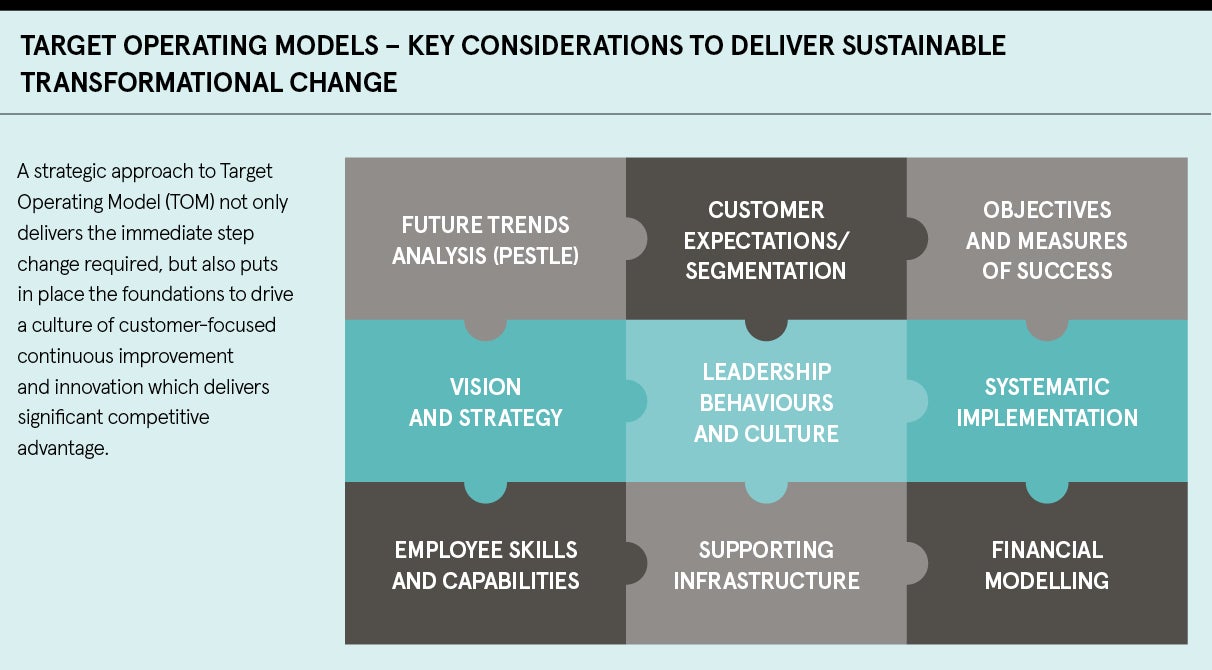Evolving market forces, growing customer expectations and the rapid development of new digital technologies have made business transformation an imperative for many organisations. Yet when 70 per cent of strategic transformation programmes fail to deliver against the original objectives, it’s clear companies need to reflect on how best to do it.
Short-term versus long-term thinking
“Short-term thinking can drive the wrong behaviours and result in poor decisions being made,” says Sean Campbell, director at Reinvigoration, a UK-based business transformation consultancy, specialising in operational excellence, continuous improvement and innovative learning.
“Although organisations will set out a clear vision and associated strategic objectives at the start of a transformation programme, over time they often gravitate towards short-term interventions, which can be detrimental to embedding the longer-term, cultural change required.”
One of the reasons behind this is organisations that experience the pressures of quarterly reporting are frequently driven by a desire to deliver short, sharp and immediate changes to the business. They may be able to demonstrate temporarily short-term benefits that satisfy the market, but as a consequence underlying issues will remain and longer-term value creation will be sub-optimal.
These short-term reactions can mean strategic objectives are not met and that over time the value originally delivered is eroded. Given the pace of change occurring in the world, it is clear organisations will be living in a state of perpetual transformation, but this does not mean they need to run strategic transformation programme after strategic transformation programme to deal with that.
We reorganise the way a business operates to optimise service delivery and value
In instances where this is occurring it would suggest the original vision and objectives were either incorrect or the short-term focus took precedence over long-term value. Therefore, when embarking on a transformation programme, companies should take the opportunity to review how they want to operate in the future. If they want to evolve in the marketplace, they need to consider what cultural and behavioural changes are needed, starting with the mindset of their leaders, and to leverage the full power of their people in driving customer-focused improvements.
Prioritising a multi-focus approach
Target operating model (TOM) reviews are often used by companies as part of a transformation programme to determine how best to structure and rationalise areas of operation. Often, cost-saving will take precedence and this can result in a future operating model that delivers sub-optimal performance in provision of product and service to the customer base. The need to manage the cost base effectively can sometimes cloud thinking on how best to structure an organisation.
“Organisations need to look at transformation from multiple perspectives,” says Campbell. “Key areas of focus include having a clear vision, understanding the long-term value expectations, ensuring employees are deeply engaged, developing the requisite capabilities, putting in the necessary supporting infrastructure, and setting out clear expectations in regard to leadership behaviours and role modelling.
“But it is also essential to put customers at the heart. What they expect and view as great today will not be the same as tomorrow. You must deeply understand your customers and quickly adapt to any changing needs and expectations, while doing so in a cost-effective manner.”

Engagement is key
Reinvigoration works with organisations to help them fulfil their full potential and deliver long-term, sustainable, transformational change. It has a structured approach to TOM reviews, with an emphasis on gaining a detailed understanding of customer segmentation and customer journeys. This helps organisations realise year-on-year value from successfully delivered transformational change, while also engaging employees, building capability and embedding a culture of continuous improvement.
“True competitive advantage comes from your people.” says Campbell. “We work with organisations across multiple sectors and pride ourselves on establishing trusted adviser relationships, which is also reflected in how we approach TOM reviews. We engage people at all levels of the business and ensure customers are actively involved. Ultimately, we will reorganise the way a business operates to optimise service delivery and value. We work to create the required behaviours and build capability, while releasing the creative and innovative power of the organisation’s people.”
Reinvigoration’s latest e-book on Target Operating Model design is available for free download at https://reinvigoration.com/operational-optimisation-times-report/#tom
Short-term versus long-term thinking
Prioritising a multi-focus approach

